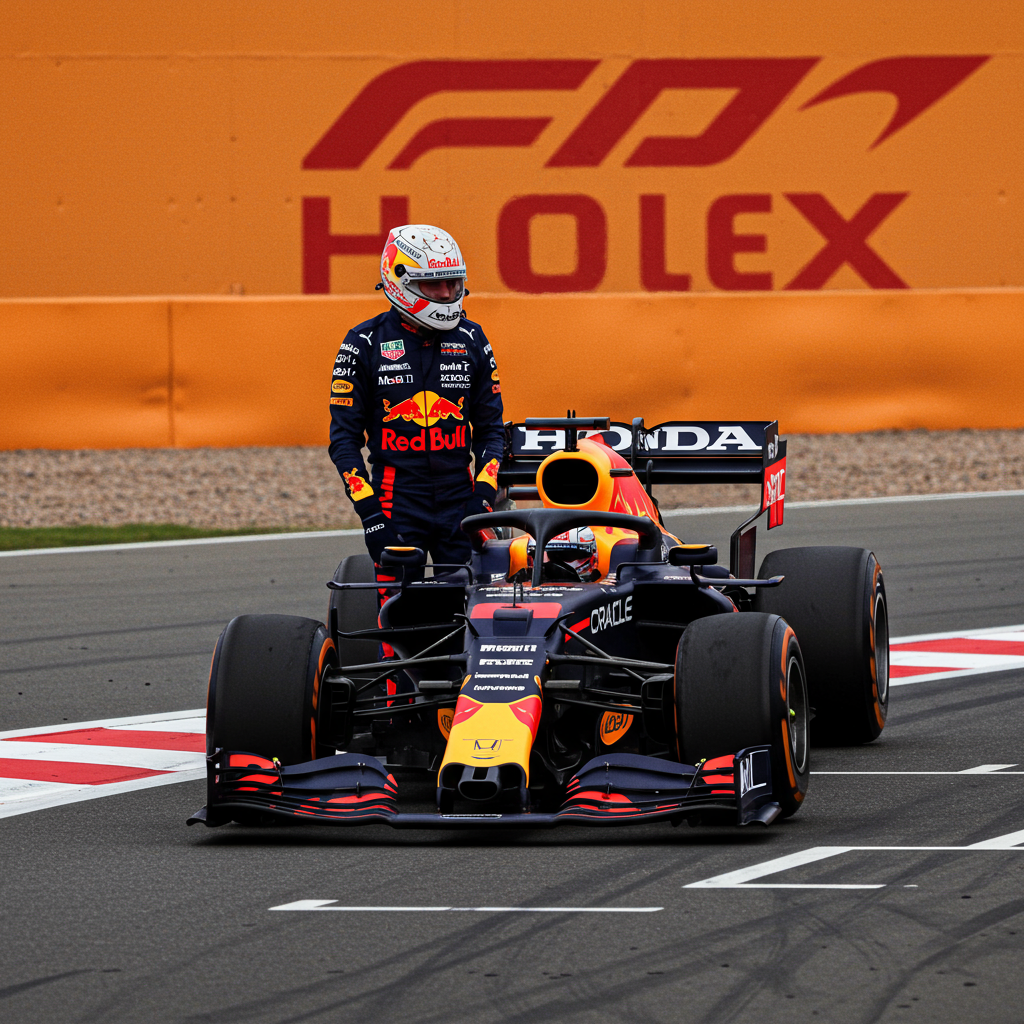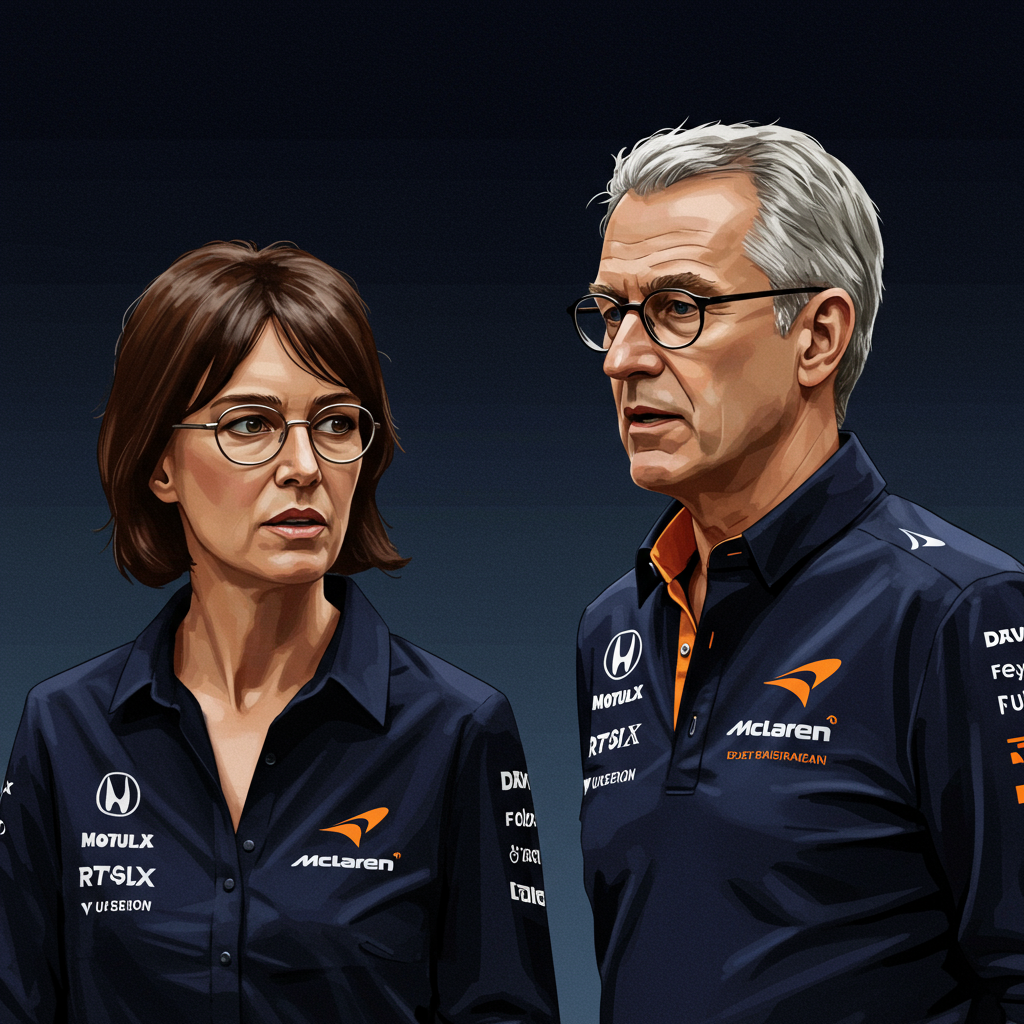Just twenty-four hours after Max verstappen wrestled with what he called “unbelievable” understeer in his Red Bull RB21, the reigning champion defied expectations to snatch pole position for the Formula 1 British Grand Prix. This sudden turn of pace at Silverstone sets the stage for a complex strategic battle, with data from qualifying and Friday’s practice offering intriguing clues about the race prospects for Red Bull, McLaren, and Ferrari.
The turnaround for Verstappen was dramatic. Red Bull advisor Helmut Marko credited a new floor and significant setup changes, including a bold move to a very low downforce configuration. Yet, Marko also pointed to the intangible “Max factor,” acknowledging Verstappen’s ability to extract performance even when the car is challenging. While rivals like Oscar Piastri left some tenths on the table and Charles Leclerc expressed frustration over team radio errors, Verstappen delivered a seemingly flawless lap when it counted most. This strategic setup choice carries inherent risks, potentially compromising performance in slow corners and stability in high-speed sweeps, but the upside became immediately clear: blistering straight-line speed.
The Low Downforce Gamble: Qualifying Lap Analysis
Comparing Verstappen’s pole lap against Oscar Piastri’s quickest Q3 effort provides a vivid illustration of the low downforce philosophy in action. Red Bull’s territory, the straights, were highlighted in blue on track maps, and the speed differentials were significant. Verstappen topped out at 313 km/h on the main straight, a clear 4 km/h faster than Piastri. This advantage carried into the fast opening corners (Turns 1 and 2), allowing Verstappen to enter with more speed.
However, the trade-off quickly became apparent. McLaren’s setup, likely featuring more downforce, showed its strength in slower and medium-speed corners. Piastri carried better speed through places like The Loop. The pattern repeated after the Wellington Straight; while Verstappen extended his gap on the straight, Piastri maintained higher minimum speeds and better traction coming out of Brooklands and Luffield.
Approaching the iconic Copse corner, Verstappen again held the top speed advantage, hitting 320 km/h compared to Piastri’s 316 km/h. The crucial gains for the pole lap came through the high-speed complex from Copse through Maggotts and Becketts. Here, Verstappen consistently held an impressive 8 km/h speed edge, a margin significant enough to build a lead of almost three tenths by the time he reached the final sector. Despite losing time in the final traction zones (Vale and Club) where McLaren’s setup was stronger, Verstappen’s execution of the low-downforce lap, combined with the straight-line speed advantage, secured pole by a slim 0.103 seconds. It was Verstappen’s fourth pole position of the season.
Race Day Prospects: Unpacking the Long Run Data
While qualifying pace is essential, Sunday’s race hinges on performance over longer stints, particularly tyre management. The data from Friday’s long runs paints a potentially different picture than the Saturday headline. Despite his initial complaints about understeer, Verstappen’s long-run performance on Friday was described by Helmut Marko as “surprisingly good,” a sentiment echoed by analysis from PACETEQ, which indicated Verstappen had the fastest average pace during these runs.
However, a critical nuance emerges when examining tyre degradation. Both McLaren drivers demonstrated significantly less tyre wear compared to Verstappen and the Ferrari drivers. This suggests two distinct approaches to Friday testing. Verstappen and Ferrari seemingly opted for a more aggressive strategy, pushing harder early in the runs to gather maximum data on tyre wear limits. This allows teams to understand the ‘cliff’ where degradation dramatically increases and plan Sunday stints accordingly.
In contrast, McLaren appeared to run a more consistent pace, potentially targeting a specific delta time per lap closer to expected race performance. This approach, while perhaps not yielding the absolute fastest average pace initially, better simulates managing tyres over a race distance. Importantly, Friday’s long runs were shorter than actual race stints. This means McLaren’s lower degradation per lap is likely underrepresented in the limited sample size, suggesting their advantage could be even more pronounced over a full race stint.
The Degradation Differential
Over the full Grand Prix distance, McLaren’s superior tyre preservation capability could potentially give them a significant edge over Red Bull and Ferrari. While Red Bull and Ferrari wouldn’t push quite as aggressively on Sunday as they did during the Friday data-gathering runs, McLaren’s inherent ability to make the tyres last longer is a powerful strategic tool. Furthermore, Verstappen’s drastically different car balance and setup for Saturday’s pole lap mean his Friday long-run data, while encouraging in terms of average pace, might not be fully representative of his race-day tyre performance with the new configuration.
The Low Downforce Dilemma: Tyre Wear and Weather
Verstappen’s low-downforce choice that paid dividends in qualifying presents a tactical question mark for the race, particularly regarding tyre wear in Silverstone’s high-speed corners. Intuitively, less downforce means the tyres have to work harder to maintain grip through fast sweeps, which could accelerate degradation.
However, there’s a counter-argument gaining traction, supported by figures like McLaren team boss Andrea Stella and Red Bull’s Helmut Marko. The theory suggests that gaining significant time on the straights with a low-downforce setup might mean the driver doesn’t need to push quite as hard in the high-speed corners to achieve a competitive lap time. This reduced cornering effort could potentially mitigate the expected increase in tyre load, meaning degradation might not be as severe as initially feared. Stella acknowledged that a car fast on the straights might require “a little bit less” cornering performance effort, potentially not worsening the tyre situation compared to a car that relies heavily on cornering speed for lap time. Marko expressed relative confidence in Red Bull’s long-run pace and noted that cooler temperatures forecast for Sunday should assist tyre management across the grid.
The ultimate outcome of this low-downforce gamble is a major unknown for the race. It makes Verstappen harder to overtake on the straights due to his top speed, but the impact on his tyre life over a full stint remains to be seen.
Another critical factor is the weather. Red Bull’s minimal downforce levels make them highly vulnerable if rain arrives. Their ideal scenario is a dry race. Ferrari, on the other hand, runs significantly higher downforce and would likely benefit from wet or changing conditions. McLaren, often described as being “in the middle” regarding downforce philosophies compared to Red Bull and Ferrari at this event, might find a compromise that works reasonably well in mixed conditions, though they would likely prefer dry stability to capitalize on their perceived tyre degradation advantage.
McLaren’s Strong Form and Ferrari’s Complex Picture
Beyond the technical data, McLaren arrives at Silverstone with strong recent momentum. Betting odds heavily favor McLaren drivers, particularly Oscar Piastri and Lando Norris, for the race win, podiums, and fastest qualifier, reflecting market confidence in their overall package and recent performance trajectory. While Ferrari drivers have shown recent consistency, notably Charles Leclerc securing podiums in recent races, their performance picture at Silverstone based on data appears more complex.
The British GP data showed Ferrari exhibiting high tyre degradation similar to Red Bull during Friday’s long runs. This contrasts slightly with data from other races, like the Chinese GP, where Ferrari seemed to demonstrate better tyre management, particularly with graining, and slightly better long-run pace than rivals. This suggests that while Ferrari can manage tyres well, their specific setup or the characteristics of the Silverstone track might present unique challenges this weekend, potentially offsetting their higher downforce advantage compared to Red Bull if it stays dry. Ferrari’s higher downforce does position them strongly should the weather turn wet, offering a potential path to challenge the McLarens and a dry-optimised Red Bull.
Midfield Insights: Degradation Tells the Tale
The tyre degradation story extends into the midfield, offering clues about which teams might fade on Sunday. Lance Stroll of Aston Martin initially showed competitive average long-run pace in the raw numbers. However, deeper analysis revealed he suffered the highest tyre degradation per lap of any driver. This means his early pace is likely unsustainable over a full race distance, suggesting he could “fall off a cliff” and be less competitive on Sunday than the average pace implies. His teammate, Fernando Alonso, displayed much more stable long-run performance, painting a more realistic and positive picture for Aston Martin’s race prospects from his P7 starting position.
For Haas, young British driver Oliver Bearman showcased encouraging long-run pace on Friday, indicating solid race potential. Unfortunately, a pitlane infringement resulted in a 10-place grid penalty, dropping him to P18. Despite promising pace in both qualifying and practice, Bearman faces a significant challenge to climb through the field on Sunday due to this setback. Other midfield teams like Williams have shown flashes of strong performance on certain tracks suited to their car, but consistent race pace remains a challenge for many beyond the top contenders.
Frequently Asked Questions
Why did Max Verstappen choose a low downforce setup for the British GP?
Verstappen opted for a very low downforce setup after struggling with significant understeer during Friday practice. This change was made to improve the car’s balance and “get more bite” in corners. The trade-off was reduced cornering speed and stability in some sections for a major increase in straight-line speed, which ultimately helped him secure pole position.
Which team seems best prepared for race distance based on tyre data?
Based on Friday’s long-run data at Silverstone, McLaren appears best prepared for race distance due to their significantly lower tyre degradation compared to Red Bull and Ferrari. While Verstappen had the fastest average long-run pace, McLaren’s approach showed better tyre preservation per lap, which is crucial for maintaining performance over a full race stint.
How does the British GP weather forecast impact team strategies?
The weather forecast, particularly the potential for rain, significantly impacts strategies due to the differing downforce levels chosen by teams. Red Bull’s low downforce setup makes them vulnerable in wet conditions and they prefer a dry race. Ferrari, running higher downforce, would benefit from rain or changing conditions.
Conclusion
The data from the British Grand Prix weekend paints a complex picture. Max Verstappen secured pole with a daring low-downforce setup, highlighting Red Bull’s straight-line speed and his exceptional driving. However, questions remain about the long-term impact of this setup on tyre degradation over a full race stint, despite a counter-theory suggesting it might not be as detrimental as expected. McLaren demonstrated superior tyre preservation in practice, making them a formidable threat for race distance, especially in dry conditions where they can capitalize on consistency. Ferrari, with higher downforce, holds a strong hand if rain materializes but showed similar high degradation to Red Bull in Friday’s data. The British Grand Prix is shaping up to be a fascinating battle of engineering philosophies, driver execution, and strategic gambles, with no single team holding a definitive advantage based purely on the numbers.
References
- www.motorsport.com
- www.formula1.com
- <a href="https://www.motorsport.com/f1/news/will-max-verstappen-british-gp-low-downforce-choice-pay-off-bite-him/10739810/?utmsource=RSS&utmmedium=referral&utmcampaign=RSS-ALL&utmterm=News&utm_content=www”>www.motorsport.com
- www.nytimes.com
- www.planetf1.com




